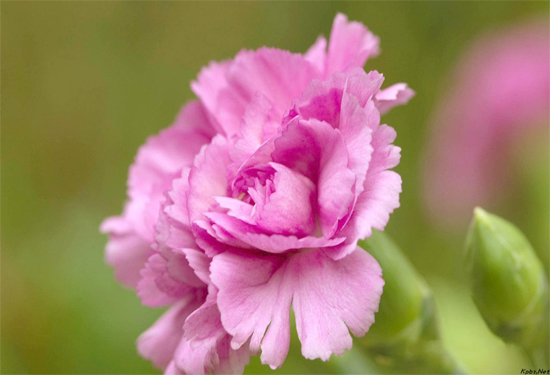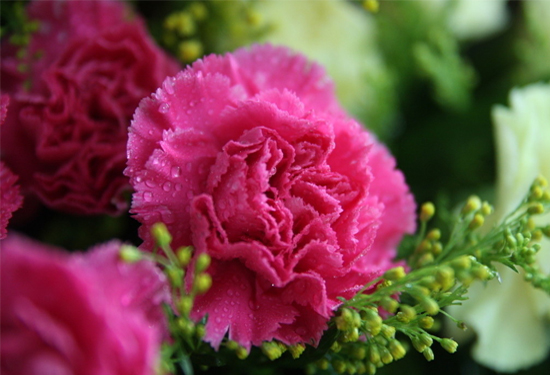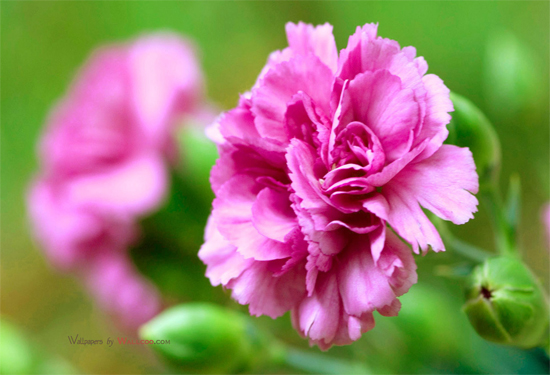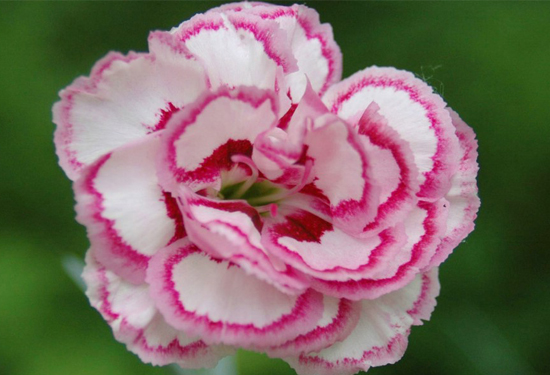Introduction to the main points of cultivation of Carnation
Introduction: Carnation is our legendary mother flower. It is one of the most widely used flowers in the world. Carnations, including many varieties and hybrids, can blossom almost continuously in a greenhouse. Since 1907, pink carnations have been used as a symbol of Mother's Day, so they are often used as flowers dedicated to mothers. So how to raise carnations? let's take a look at them together.

Mode of reproduction:
Sowing, pressing and intercalation can be used, but mainly sowing insertion. The insertion can be carried out at any time except in hot summer, especially from late January to early February. Cuttings can choose the side branches that grow between the axils of the middle leaves of the branches. When picking cuttings, you should use the "budding method", that is, take the side branches in hand and break them down along the main branches, so that there are node marks at the base of the cuttings, so that they are easier to survive.

Main points of cultivation:
Soil: clay soil that requires good drainage, rich humus, good fertilizer retention and slightly alkaline.
Watering: carnations grow strongly and are more resistant to drought. In rainy and wet areas, the soil is easy to harden and the root system develops abnormally due to poor ventilation, so attention should be paid to loosening the soil and drainage in the rainy season. Except for timely watering during the growing and blooming season. Usually less watering, in order to keep the soil moist.

Fertilization: carnations like fertilizer, apply sufficient amount of baking fertilizer and bone powder before planting, and constantly apply liquid fertilizer during the growing period, generally apply mature thin fertilizer and water every 10 days or so, and apply topdressing after flower picking.

In order to promote the multi-branch and multi-flowering of carnation, it is necessary to carry out multiple coring from the seedling stage: when the seedlings grow 8 to 9 pairs of leaves, the first coring is carried out, and 6 pairs of leaves are reserved for 4 or more pairs of leaves; when the lateral branches grow more than 4 pairs of leaves, for the second time, 4 pairs of leaves are retained for each side branch, and it is better to make the whole plant have 15 lateral branches at last.
Recommended reading: the latest overview of the culture methods of daffodils
- Prev

Explanation of cultivation techniques of Cymbidium lanceolata Analysis of planting techniques of Cymbidium
Explanation of cultivation techniques of Cymbidium lanceolata Analysis of planting techniques of Cymbidium
- Next

Share the opinions of flower cultivation and recommend the experience of flower cultivation
Share the opinions of flower cultivation and recommend the experience of flower cultivation
Related
- Wuhan Hospital Iron Tree Blooming Result Was Instantly Frightened by the Gardener Master
- Which variety of camellia is the most fragrant and best? Which one do you like best?
- What is the small blue coat, the breeding methods and matters needing attention of the succulent plant
- Dormancy time and maintenance management of succulent plants during dormancy
- Minas succulent how to raise, Minas succulent plant pictures
- What are the varieties of winter succulent plants
- How to raise succulent plants in twelve rolls? let's take a look at some experience of breeding twelve rolls.
- Attention should be paid to water control for succulent plants during dormant period (winter and summer)
- Watering experience of twelve rolls of succulent plants
- Techniques for fertilizing succulent plants. An article will let you know how to fertilize succulent plants.

